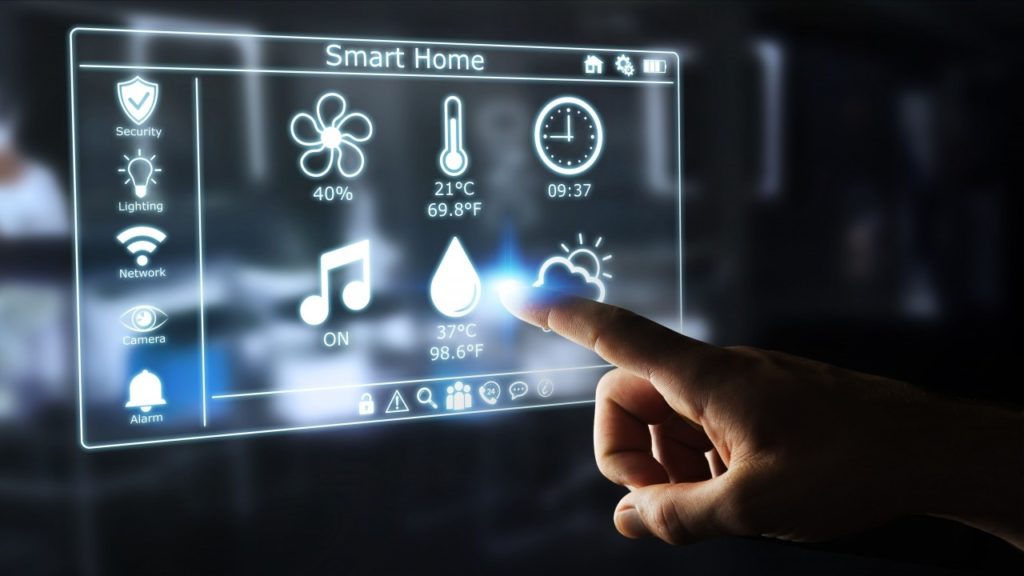A recent report from Zion Market Research forecasts that the worldwide Smart Home Market will be worth USD 53.45 by 2022. Indeed, the industry has progressed considerably from the earliest smart home device – the ECHO IV, a 1966 invention of Jim Sutherland’s and considered to be the first home computer.
6 Predictions of What’s Coming in Smart Home Technology
From smart home speakers to residential alarm monitoring, smart home technology looks set to become increasingly exciting in the years to come.
1. Revolutionized Networking with Wi-Fi 6 and 5G Entering More Homes
5G is mobile broadband for the new age! In contrast to the typical 4G LTE, 5G functions on three varied spectrum bands – low band, mid-band and high-band and in doing so, dramatically impacts daily use. This modern wireless technology is expected to render three key benefits:
- Faster data transfer speeds, approximately 10 times more than that possible with 4G
- The opportunity for more people and more number of devices to be connected simultaneously by way of increased capacity of the cell tower
- Reduced latency so no glitches or delays for even high-speed video.
Now, what about Wi-Fi 6? Wi-Fi 6 or 802.11ax or high-efficiency wireless, as can be discerned from the name itself, is an upgrade on Wi-Fi 5 or 802.11ac with over 50 feature updates. Wi-Fi 6 will provide a per user throughput four times more than the previous specification in crowded environments. Other expected benefits include:
- Each client device gets peak data rates that are higher to a maximum of 40 percent more than the previous specification.
- Improved power efficiency and therefore better battery life
- In areas where reception is poor, wireless traffic can be offloaded from cellular networks
- Networks can manage different data streams simultaneously
2. More Voice Control of the Home
Google Home Mini or the Amazon Echo Dot – you could soon be hearing these names more often. 2019 is the year when smart home speakers are starting to become common. Whether you want to control the thermostat, power outlets, lighting or smart locks from across the room, it is all possible, with Google Assistant or Alexa only a voice command away. Even accessing news, reservation bookings, music, recipes, quizzes and jokes is so easy.
Alexa soars above Google Assistant in the greater number of skills and a bigger range of third-party applications including Amazon Music, Lyft, National Rail Enquiries, Fitbit, Uber and Expedia. On the other hand, Google Assistant has Google, the globe’s predominant search engine and so can provide better answers to the questions you throw at it.
3. Home Security Upgrades
The future sees more homeowners embracing security upgrades. One such device is the video doorbell. This smart digital device captures a video of a person at the door. You, sitting in the comfort of your home, can decide whether or not you want to let the person in. If you are not the one who likes entertaining strangers, this helps. Newer versions will have better video quality.
Coming to complete security systems, modern residential alarm monitoring looks set to leave the older models behind. 24/7 monitoring, real-time camera streaming, battery backup and smart home automation are just some of the attractive features.
4. Circadian Rhythm and Lighting
There will be increasing emphasis on circadian lighting which in simple terms is light adjusting itself to suit the body’s 24 hour internal clock. The majority of offices have electrical or fluorescent lights which offer just the two options of switching the lights on or off. However, circadian lighting modulates warmth, brightness or even the colors in accordance with the time of day. It does this by imitating natural sunlight’s circadian rhythms. It utilizes natural sunlight’s position, color and angle. The result is better mood, alertness, productivity, and sleep.
5. Wireless Charging will Grow Buds
A number of companies are at work to introduce wireless charging solutions for devices. So people can forget about battery changes and power outlets. Wi-Charge is one such company and it harnesses infrared light to achieve the long-range wireless power. In addition to phones, the power generated can be used to charge a variety of IoT (Internet of Things) devices simultaneously. The technology is FDA approved.
6. Concerns over Privacy and Security
The widening avenues of smart home technology, attractive as they are, would also invite concerns about data privacy and security. Think about it. Whenever you add a new smart home device to your home, more businesses are able to collect information relating to your daily life. They can then use some of that data to assist advertisers with targeting you.
There are also continuing concerns about hacking. If the necessary measures are not taken, smart home systems could be compromised in future. The good news is the encouraging of personal privacy could soon become an industry concern.
So that was a teaser of where the smart home technology industry could be moving in the years to come. The industry is progressing by leaps and bounds and by the looks of it, is here to stay!

Leave a Reply